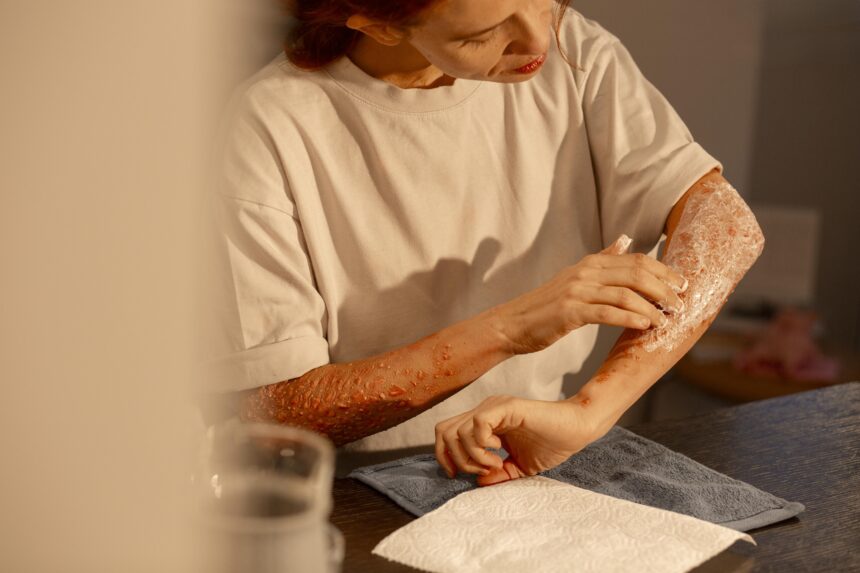Introduction
Tattoo removal is a process that many people consider when they want to erase or alter a tattoo they no longer want. While this procedure can be a game-changer for those seeking to remove unwanted body art, one common side effect that may arise during the healing phase is the formation of blisters. Understanding what tattoo removal blisters are, how to prevent them, and how to properly treat them is crucial for a smooth recovery.
In this comprehensive guide, we’ll cover everything you need to know about tattoo removal blisters, including the causes, treatment options, prevention tips, and frequently asked questions. Whether you’re considering tattoo removal or you’re in the midst of the process, this article will provide you with valuable insights to ensure a safe and effective healing experience.
What Are Tattoo Removal Blisters?
Tattoo removal blisters are raised, fluid-filled bumps that can form on the skin during the healing process after a tattoo removal procedure. These blisters typically appear after the use of laser tattoo removal, the most common method for eliminating tattoos. The procedure involves using a laser to break down the ink particles in the skin, which are then absorbed by the body.
The formation of blisters is a natural part of the healing process, though they can be uncomfortable and concerning for some people. They often occur as the skin reacts to the laser’s intense light energy, which causes damage to the tattooed area and stimulates the skin‘s healing mechanisms.
Blisters are usually filled with clear fluid, but in some cases, they may contain blood or pus if an infection occurs. In most cases, blisters are a temporary side effect and should resolve as the skin heals. However, it is essential to know how to care for blisters to prevent complications and ensure proper recovery.
Causes of Tattoo Removal Blisters
Tattoo removal blisters are primarily caused by the body’s response to the laser energy used during the removal procedure. Here are the main factors contributing to the formation of blisters:
1. Laser Energy Intensity
The laser used in tattoo removal is highly concentrated and targets the ink particles embedded in the skin. Depending on the size, color, and depth of the tattoo, the laser may deliver varying amounts of energy to break down the ink. This intense energy can cause the skin to react in different ways, leading to the formation of blisters.
2. Skin Sensitivity
Everyone’s skin is different, and some individuals may have more sensitive skin than others. Those with sensitive skin are more likely to develop blisters or experience irritation following tattoo removal, as their skin may overreact to the laser energy.
3. Infection or Inflammation
If the tattoo removal area is not properly cleaned or treated after the procedure, it can lead to infection or excessive inflammation. Infected or inflamed areas are more likely to develop blisters. It’s crucial to follow the aftercare instructions provided by your technician to avoid these issues.
4. Depth of Tattoo Ink
Tattoos with deep or thick ink may require more laser sessions to remove. This process may cause more trauma to the skin, resulting in a higher chance of blistering as the skin tries to heal itself.
5. Improper Aftercare
Following proper aftercare instructions is essential to minimize the risk of blisters. If you don’t take care of the treated area, it can lead to complications such as blistering, scarring, or infection.
How to Prevent Tattoo Removal Blisters?
While it’s impossible to guarantee that blisters won’t form during tattoo removal, there are steps you can take to reduce the risk:
1. Choose an Experienced Professional
Selecting a licensed, experienced tattoo removal technician is crucial to ensure the procedure is done correctly. An experienced technician will know the proper laser settings for your skin type and tattoo, reducing the risk of adverse reactions like blisters.
2. Follow Aftercare Instructions
Proper aftercare is vital for minimizing blisters and promoting healing. Be sure to keep the treated area clean, avoid direct sun exposure, and refrain from scratching or picking at the blisters. Applying any recommended ointments or creams can help speed up the healing process.
3. Stay Hydrated and Maintain Skin Health
Drinking plenty of water and maintaining healthy skin through proper hydration can help the skin heal faster. Additionally, moisturizing the treated area with a non-comedogenic lotion can keep the skin nourished and prevent dryness or irritation.
4. Avoid Tight Clothing or Friction
Avoid wearing tight clothing or anything that may rub against the treated area. Friction can aggravate the skin and increase the likelihood of blisters. Opt for loose clothing during the healing process to allow the skin to breathe.
5. Do Not Pick at Blisters
If blisters do form, resist the urge to pick at them. Picking at blisters can introduce bacteria and increase the risk of infection. Let them heal naturally, and they should subside without causing long-term issues.
How to Treat Tattoo Removal Blisters?
If you experience blisters after tattoo removal, there are steps you can take to treat them and ensure proper healing:
1. Clean the Area Gently
Use a mild, fragrance-free soap and warm water to gently clean the affected area. Avoid scrubbing the skin, as this can aggravate the blisters.
2. Apply an Antibiotic Ointment
To prevent infection, you can apply a thin layer of antibiotic ointment, such as Neosporin, to the blistered area. Be sure to apply the ointment sparingly and avoid excessive use.
3. Keep the Area Moisturized
Keeping the skin moisturized is crucial for proper healing. Apply a fragrance-free, non-comedogenic lotion to the area to keep it hydrated.
4. Avoid Sun Exposure
Direct sunlight can damage the healing skin and increase the risk of scarring. Make sure to keep the treated area covered or use a sunscreen with a high SPF when you’re outdoors.
5. Consult Your Tattoo Removal Technician
If the blisters seem excessive or don’t subside after a few days, contact your tattoo removal technician or healthcare provider. They can advise you on the best course of action and determine if further treatment is needed.
Potential Risks of Tattoo Removal Blisters
While blisters are often a normal part of the healing process, there are some risks associated with them. These include:
- Infection: If blisters are not properly cared for, they can become infected, leading to more severe complications.
- Scarring: Blisters that are popped or scratched can lead to scarring or permanent damage to the skin.
- Hyperpigmentation: In some cases, blistering can result in darker spots on the skin, known as hyperpigmentation, which may take time to fade.
Tattoo Removal Blisters: When to Seek Medical Attention
While most tattoo removal blisters will heal on their own, there are situations in which you should seek medical attention. These include:
- If the blisters become excessively painful or inflamed.
- If you notice signs of infection, such as pus, increased redness, or swelling.
- If the blisters do not begin to heal after several days.
- If you have any concerns about scarring or permanent skin damage.
Tattoo Removal Blisters FAQ
Are blisters normal after tattoo removal?
Yes, blisters are a common and normal side effect of tattoo removal. They usually form as a natural response to the laser energy, and they typically resolve as the skin heals.
How long do tattoo removal blisters last?
Tattoo removal blisters generally last between a few days to a week. In most cases, they will heal on their own with proper care.
Should I pop a blister after tattoo removal?
No, you should avoid popping blisters as this can lead to infection, scarring, and further irritation. Let them heal naturally.
Can tattoo removal blisters lead to scarring?
In some cases, tattoo removal blisters can lead to scarring, especially if they are popped, scratched, or infected. Proper aftercare can help reduce the risk of scarring.
What can I do to prevent blisters from forming after tattoo removal?
To prevent blisters, make sure to follow aftercare instructions, stay hydrated, avoid tight clothing, and keep the treated area clean and moisturized. Choosing a skilled tattoo removal technician can also reduce the risk.
Conclusion
Tattoo removal blisters are a common side effect of the tattoo removal process, but they don’t have to be a cause for concern. Understanding what causes these blisters, how to treat them, and how to prevent them will help ensure that your tattoo removal journey goes smoothly. By following the right aftercare and seeking professional advice when necessary, you can heal efficiently and achieve the results you desire.






